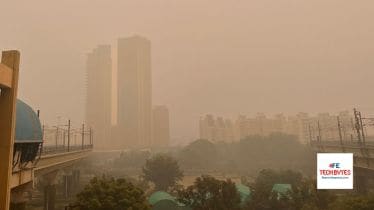By Dr. Vikram Vora
As the known and better-understood detrimental impacts of urbanisation and industrialisation continue to cause damage to the environment, it is the lesser-understood impact of human activities that are resulting in a serious and severe deterioration of air quality in several parts of India over the past few weeks.
The story is not new but has grown in relevance over each passing year. Northern India witnesses a worrying post-autumn period each year, with air pollution at its peak level. This is attributed to crop stubble burning, increased vehicular and industrial emissions, celebrations involving the use of firecrackers, etc., which increase the particulate matter (PM) in the circulating air. Other parts of India like Mumbai, for instance, have reported Air Quality Index (AQI) readings worse than Delhi/NCR on several days of the year. This is attributed to the massive infrastructure development and ongoing private construction activities, pushing up the PM levels.
However, air pollution is not confined to suspended particulate matter – noxious gases like ozone, carbon monoxide, carbon, sulphur and nitrogen dioxides probably cause as much (if not more) damage to human health and wellbeing as does particulate matter. As a result, cases of inflammation of the eyes and nasal passages, upper and lower respiratory infections and exacerbation of chronic respiratory conditions like asthma are on the rise. Exposure to air pollutants has been linked to a range of other health issues like worsening of cardiovascular problems, and adverse effects on mental health as well.
One would like to think that an annual problem such as this would have already been solved and managed but unfortunately, the converse is true. Even as the situation worsens every year, only temporary measures are deployed, and the problem recurs in the next year. It is now become imperative that individuals and organisations join hands to manage this menace. It is encouraging to note that organisations have begun to recognize the need to prioritize the well-being of their employees and are willing to consider proactive measures to protect their workforce.
Steps to protect employees
There are some important proactive and reactive steps that organisations can take to mitigate the impact of rising air pollution on employee health and well-being. Since we are already amid the crisis this year, let’s consider the reactive steps first:
Providing flexibility at work by encourage telecommuting or realigning work schedules to minimize the time employees spend commuting in polluted environments can be a good start. Allowing employees (especially the ones who are vulnerable due to pre-existing health conditions) to work remotely when pollution levels are particularly high can prevent employee illness and maintain productivity levels.
If working from office is a necessity, then managing indoor air quality by upgrading ventilation systems to enhance the circulation of fresh air within the workplace does help. Organisations should conduct regular air quality assessments to identify and address potential sources of indoor pollution. Air purifiers equipped with high-efficiency particulate air (HEPA) filters can help reduce indoor pollutant levels significantly.
Another way to protect employees who need to commute to work is to provide them with personal protective equipment (PPE) such as masks designed to filter out particulate matter and pollutants. Training on the proper use of these PPEs should be mandatory for maximum efficacy.
For individuals who are affected by the harmful effects of air pollution, providing them access to expert medical resources is important. Having an Environmental Emergency Health Response Plan for the workplace will guide employees to seek correct and timely medical help.
On a proactive basis, there can be no substitute for a detailed, medically led employee awareness program to educate the workforce about the impending health and wellbeing risks as well as preventive measures to be undertaken at varying levels of air pollution.
A comprehensive health and wellbeing program that includes climate change and its impact can be a cornerstone of organisational resilience and sustainability. This should include not only the physical aspect of health but also the management of mental well-being challenges like climate or eco-anxiety.
Adoption of environmentally sustainable practices, including green building design and integrating green spaces within the workplace to enhance air quality can provide relief to employees during future periods of increased air pollution. Providing employees with transportation options that reduce emissions such as electric vehicles or carpools can additionally contribute to a reduced carbon footprint.
Also read: How tyres cause air pollution?
All this requires deep leadership commitment, which must percolate downward to managers, employees, partners and service providers. Environmental health policy advocacy and collaboration with authorities, communities and other businesses can facilitate collective addressing of the problem.
As several parts of India grapple with the challenges of rising air pollution, organisations have a crucial role to play in safeguarding the health and well-being of their employees. Only a healthy and happy workforce that feels secure at the workplace can sustain productivity, growth and profitability.
(The author is Medical Director, Indian Subcontinent, International SoS. Views expressed are personal.)
